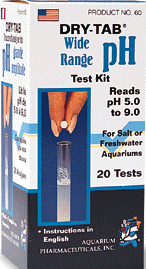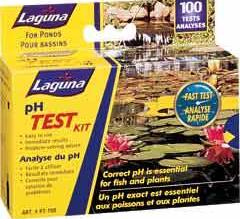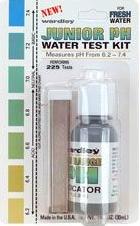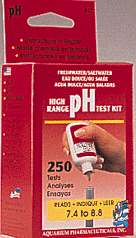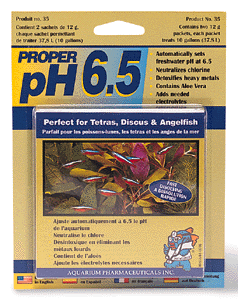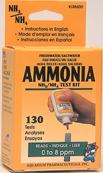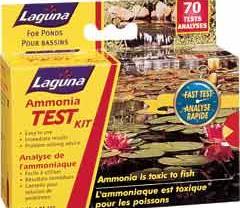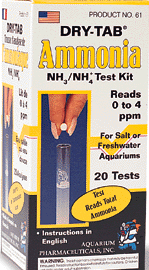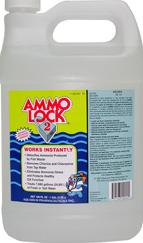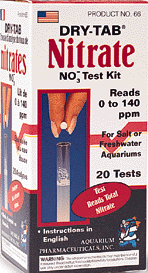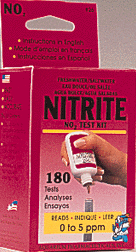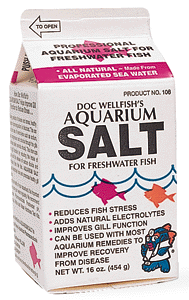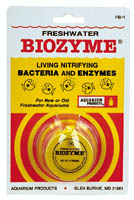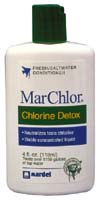|
|
|
|
On this page, we'll go over some of the following items. You
can click on the desired subject to skip past everything else and get right to
what you are looking for.
|
||
|
|
|
|
|
|
|
|
This is of as great of a concern to keepers of aquatic turtles as is the quality of the diet which they feed them. Poor water quality could mean hassles, health problems and can cause death if not detected. There are 4 aspects of water quality that are important to our little friends. These need to be monitored and kept under control as bad things can happen as a result of poor water quality. See Medical Situations for more.
|
||
|
|
|
|
|
|
|
|||||||||||||||||||||||||||
|
PH is how acidic or alkaline your water is. It's a scale with 7 being what is called Neutral...neither acidic nor alkaline. Anything below 7 is considered acidic and anything above 7 is called alkaline. Why is pH so important? The first major concern for pH with turtles is that some turtles require a certain pH setting. For example, Diamondback Terrapins require a pH rating of around 7.5, whereas Mata Matas require a pH setting of about 5.. For a happy, healthy turtle, the proper pH is a must. Without the proper pH, there could be complications that occur. Secondly, a more acidic pH is desired because of its ability to prevent certain strains of bacteria and fungal outbreaks. The lower the pH, the less likely certain types of these nasty intruders will have in surviving. The higher the pH rating, the more these nasty things can develop and thrive in the turtles' habitat. Most people's tap water has a rating of about 7.5 - 8.5. This will work for most North American species, but when get into the more exotic species, then you will have to pay close attention to the pH levels. With the North American species, you can get by with lowering the pH levels to about 6.2 to assist in preventing shell infections, but if you own a softshell, I would not go any lower than 6.5 for fear of burning the softy. How do I test my turtle's pH level? There are a number of test kits that you can buy and they are great for fast, easy and accurate results.
How do you raise or lower the pH? Again, most pet stores carry pH chemicals. Once you get the pH to where you want it, a good idea is to buy a product that will maintain the pH for you. We use Sodium Biphosphate to lower the pH to where we want it, usually in the 6 - 6.5 area. Once there, we use Proper pH 6.5 or Proper pH 6.0 to maintain it where we like it to be. Another major, huge, immense benefit of a low pH, is that ammonia is less and less toxic to your turtles. Another excellent product, for those that prefer to go more of the natural route, is "Blackwater Extract".
|
|||||||||||||||||||||||||||||
|
|
|
||||||||||||||||||||||||||||
|
|
|
|
|||||||||||||||||||||||||||||||||||||||||||||
|
Bad stuff. Ammonia can cause you more problems that you think. This comes from the turtles' bathroom habits as well as any decaying food in the aquarium water. Bad stuff indeed. Get yourself a test kit and test this regularly.
Some things to fight the ammonia are, again, at your local pet store. Ask them about it and they can hook you right on up with the proper products to combat this yucky stuff as this is also a major concern with fish. If a high Ammonia level is a problem, there is nothing better than a good, old fashioned water change.
Other items to look for in water quality are Nitrite and Nitrate levels, and in some cases, Specific Gravity. Each one tests for something different, so pay close attention to the ones that you are buying.
A little something to aid in your struggle with water quality, is adding some fresh water aquarium salt to your tank. This also helps fight fungus and is over all beneficial to your turtles. Just don't over do it. Some turtles will need a brackish habitat, which means that their water isn't freshwater, but it isn't salt water....rather, in between. These are turtles that are found along coastal areas. There are several brands to choose from, and pay attention to their directions, as some may differ.
Another great way of eliminating ammonia, is to get it's natural enemy...bacteria. But aren't bacteria bad? Not all bacteria are bad. Some are actually good and you will come to thank their existence. Biozyme is a great additive to your turtles' home. This stuff is great! It actually eats the ammonia. Cool huh? Another way of introducing extras that are great at destroying ammonia is to add a blend of high density bacteria. We used a product by Tropical Science call T.S Pond. They also sell a more diluted form called Nitromax. Works wonders, especially in combination with the Biozyme.
Something very important to remember before adding any form of bacteria to aid in the break down of ammonia. There is chlorine in the water we drink and bathe in, and most people use that very same water to fill and add to their turtles' homes. This chlorine will kill the bacteria as you add it. In the case of an established bacteria base in an existing aquarium, chlorinated water will kill or seriously damage the existing bacteria living in your tank. So how do you prevent this? Well, in establishing a new tank, it is recommended that you add the Biozyme before adding the substrate. Once you are ready to add the water, use a dechlorinater. Tropical Science also puts out a product called Complete Care that will eliminate the chlorine. We use a product called Chlor-Out by Wardley. You should let the water set once it has been treated for about 2 minutes before adding it to your aquarium. For already established tanks, it is much easier. Water will evaporate and that can not be helped, but adding water a little at a time (cupfuls or bucketfuls) and treating it with one of the various chemicals to remove the chlorine, will keep your friendly bacteria safe and secure.
|
|||||||||||||||||||||||||||||||||||||||||||||||
|
|
|
||||||||||||||||||||||||||||||||||||||||||||||
|
|
|
|
|
Feeding the turtles is best done in a separate location. Be it a bowl, plastic container or Rubbermaid container. This makes for easy cleaning and a cleaner tank, as food residue can bring about bacteria, fungus and ammonia level increases. For personal hygiene purposes, ensure that this container is not used for preparing or containing food/items for human consumption. See the General Information page for more information on Salmonella. If you have any questions at all about starting, upgrading or anything at all, feel free to drop me an email and I would be more than happy to help you and answer any and all questions you have. If I don't have an answer, I will be able to get one for you within a few hours of my receiving your email. |
||
|
|
|
|
|
|
|
|
There is no such thing as too much filtration. When determining water kind of filter to get, think big. You can't overdo it, so rest assured. Turtles release more waste in one day than a fish does in over a week, so make sure you go with something that will accommodate your little friends' bathroom habits. A charcoal insert into any filter system will help fight the smell that comes with having our friends. There are 3 types of filtration: Biological, Mechanical and Chemical (definitions provided by www.DrsFosterSmith.com) Biological Filtration is the process by which aerobic (nitrifying) bacteria oxide the toxic ammonia through nitrite, (which is only slightly less toxic than ammonia) to the relatively harmless nitrate. This process is known as nitrification, and in nature takes place in aquatic habitats and soils where ammonia and sufficient oxygen are present. Mechanical Filtration is the physical removal of particulate matter from the water. This is achieved by introducing a mechanical barrier in the water flow that traps particles of a certain size according to filter material used. A mechanical filter is only effective when it is cleaned regularly, otherwise bacteria will settle in and start breaking down the collected dirt, thus setting minerals free into the water as well as becoming a bio-filter resulting in increased nitrate levels. The nitrifying bacteria develop naturally in an aquatic environment and will colonize any suitable filter media. Once a biological filter media has been established it should be disturbed as little as possible since the bacteria colony maintains its level of activity according to the bio-load present in the system. Chemical Filtration uses chemicals, in particular Active Carbon, to absorb organic material such as oxidation products of proteins, remains of fish medications and organic toxicants. It is also effective in removing oxidation products that are formed by ozonating seawater (slight amounts of chlorine and bromine). Active Carbon should be replaced regularly, since it gets saturated and as bacteria settle on it, it will eventually work like an ordinary biological filter. We currently use AquaClear, Filstar and Fluval brand filters in our various tanks, ranging anywhere from 20 gallons to 240 gallons. For more information on Filtration, please see the article "Filtration". |
||
|
|
|
